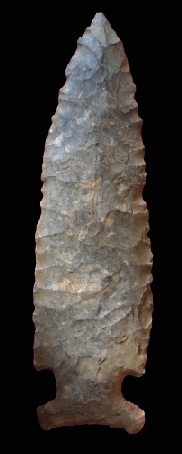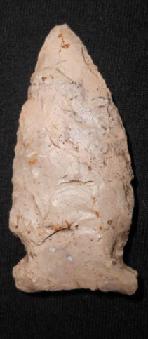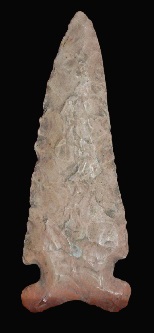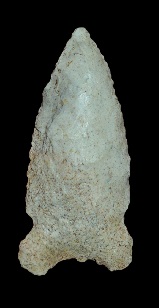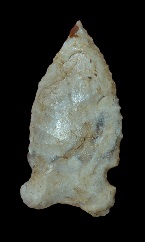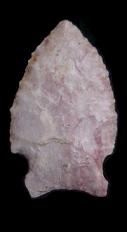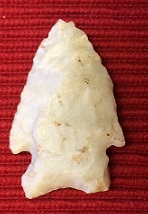Outline is Representative of Size and Shape:
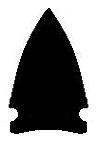
Name Details:
Identified By: Dan F. Morse
Named For:
Date Identified: 1981
Type Site:
Identified By: Dan F. Morse
Named For:
Date Identified: 1981
Type Site:
Point Validity:
Valid type
Morse is an anthropologist who was a professor at the University of Arkansas. He served as an archaeologist for the Arkansas Archaeological Survey. This point was named in a professional publication and has many professional references. This is considered a valid type.
Morse is an anthropologist who was a professor at the University of Arkansas. He served as an archaeologist for the Arkansas Archaeological Survey. This point was named in a professional publication and has many professional references. This is considered a valid type.
Hickory Ridge Side Notch
Cluster: Large Side Notch Cluster Description of Physical Characteristics and Flaking Pattern:
This is a medium to large triangular side notch point with an elliptical cross section The blade is primarily excurvate, but may vary to incurvate on re-sharpened examples. Notches generally enter the blade parallel, but may enter at a slight angle which forms a shoulder that varies from horizontal to slightly barbed. The stem is expanding. The base ranges from concave to straight and generally has rounded basal corners. This point has a random flaking pattern.
Size Measurements:
Total Length - 45 to 120 mm (average 55 to 65 mm), Hafting / Stem Length - 12 to 20 mm, Blade / Stem Width - 25 to 40 mm, Neck Width - 18 to 27 mm
Total Length - 45 to 120 mm (average 55 to 65 mm), Hafting / Stem Length - 12 to 20 mm, Blade / Stem Width - 25 to 40 mm, Neck Width - 18 to 27 mm
Commonly Utilized Material:
Additional Comments:
Distribution: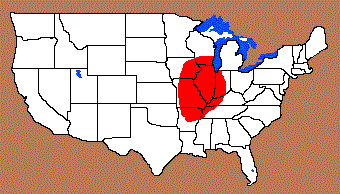
Distribution Comments:
This point is most commonly found in Missouri, Arkansas, and Iowa. This point may be found into Wisconsin and Indiana with decreased frequency.
This point is most commonly found in Missouri, Arkansas, and Iowa. This point may be found into Wisconsin and Indiana with decreased frequency.
Age / Periods:
Date: 7,000 - 5,000 B.P.
Cultural Period: Middle Archaic
Glacial Period: Middle Holocene
Culture:
Date: 7,000 - 5,000 B.P.
Cultural Period: Middle Archaic
Glacial Period: Middle Holocene
Culture:
Age Details:
Other points in this cluster / Related / Associated Points:
Brannon (Godar Variant), Big Sandy ,Cache River Graham Cave, Greenbrier, Hemphill, Howard County, Madison Side Notched, Osceola, Osceola Greenbrier, Raddatz, Simonsen
Brannon (Godar Variant), Big Sandy ,Cache River Graham Cave, Greenbrier, Hemphill, Howard County, Madison Side Notched, Osceola, Osceola Greenbrier, Raddatz, Simonsen

